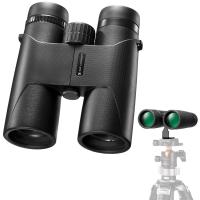What Can Light Microscopes See ?
Light microscopes can see structures and organisms that are too small to be seen with the naked eye, such as cells, bacteria, and small organisms like protozoa. They can also be used to observe the internal structures of larger organisms, such as tissues and organs. Light microscopes use visible light to illuminate the specimen, and the image is magnified by a series of lenses. The resolution of a light microscope is limited by the wavelength of visible light, which is around 400-700 nanometers. This means that structures smaller than this cannot be resolved. However, with the use of special techniques such as staining and phase contrast microscopy, it is possible to enhance the contrast and visibility of certain structures. Overall, light microscopes are a valuable tool for studying the microscopic world and have contributed greatly to our understanding of biology and medicine.
1、 Cellular structures and organelles
Light microscopes are powerful tools that allow scientists to observe and study cellular structures and organelles. These microscopes use visible light to magnify and illuminate specimens, making it possible to see details that are not visible to the naked eye.
With a light microscope, scientists can observe the structure and function of cells, including the cell membrane, cytoplasm, and nucleus. They can also see organelles such as mitochondria, ribosomes, and the endoplasmic reticulum. By studying these structures, scientists can gain insights into how cells function and how they interact with each other.
Recent advances in light microscopy have made it possible to see even smaller structures within cells, such as individual molecules and proteins. Techniques such as fluorescence microscopy and confocal microscopy allow scientists to label specific molecules with fluorescent dyes and observe their behavior in real-time.
Overall, light microscopes are essential tools for studying cellular structures and organelles. They have revolutionized our understanding of the microscopic world and continue to be a vital part of scientific research.

2、 Tissues and their organization
Light microscopes are powerful tools that allow scientists to observe and study the structure and organization of tissues. These microscopes use visible light to magnify and illuminate specimens, allowing researchers to see details that are not visible to the naked eye.
With light microscopes, scientists can observe the different types of tissues that make up organs and organisms. They can see the arrangement of cells within tissues, as well as the different structures and organelles within cells. For example, they can observe the different layers of skin tissue, the arrangement of muscle fibers in muscle tissue, and the organization of nerve cells in nervous tissue.
In recent years, advances in light microscopy have allowed scientists to see even more detail than before. Techniques such as confocal microscopy and super-resolution microscopy have enabled researchers to observe structures at the nanoscale level, revealing details that were previously invisible.
Despite these advances, there are still limitations to what light microscopes can see. For example, they cannot observe structures that are smaller than the wavelength of visible light, such as individual molecules. To observe these structures, scientists must use other techniques such as electron microscopy.
Overall, light microscopes are powerful tools for studying tissues and their organization. With continued advances in technology, they will continue to play an important role in advancing our understanding of the biological world.

3、 Microorganisms and their morphology
Light microscopes are powerful tools that can be used to observe a wide range of biological specimens, including microorganisms and their morphology. These microscopes use visible light to magnify and illuminate the specimen, allowing researchers to observe the structure and behavior of cells and microorganisms.
With a light microscope, researchers can observe the morphology of microorganisms, including their shape, size, and internal structures. They can also observe the behavior of microorganisms, such as their movement and interactions with other cells.
Recent advances in light microscopy have expanded the capabilities of these instruments, allowing researchers to observe even smaller structures and processes. For example, super-resolution microscopy techniques can be used to observe structures that are smaller than the wavelength of visible light, such as individual molecules and cellular structures.
Overall, light microscopes are powerful tools for studying microorganisms and their morphology. With continued advances in technology, these instruments will continue to play an important role in biological research and discovery.

4、 Chromosomes and their behavior during cell division
Light microscopes are powerful tools that allow scientists to observe and study the structure and behavior of cells and their components. With the help of light microscopes, scientists can see a wide range of structures and processes within cells, including chromosomes and their behavior during cell division.
Chromosomes are the structures within cells that contain genetic information in the form of DNA. During cell division, chromosomes condense and become visible under a light microscope. Scientists can use light microscopes to observe the behavior of chromosomes during different stages of cell division, including mitosis and meiosis.
During mitosis, chromosomes replicate and then separate into two identical sets, which are distributed to two daughter cells. Light microscopes can be used to observe the condensation and alignment of chromosomes during mitosis, as well as the separation of the two sets of chromosomes into the daughter cells.
During meiosis, chromosomes undergo a more complex process of replication and separation, resulting in the production of four daughter cells with unique combinations of genetic information. Light microscopes can be used to observe the behavior of chromosomes during meiosis, including the pairing and exchange of genetic material between homologous chromosomes.
Recent advances in light microscopy technology, such as super-resolution microscopy, have allowed scientists to observe chromosomes and other cellular structures with even greater detail and clarity. These advances have led to new insights into the behavior of chromosomes and their role in cell division and genetic inheritance.





































